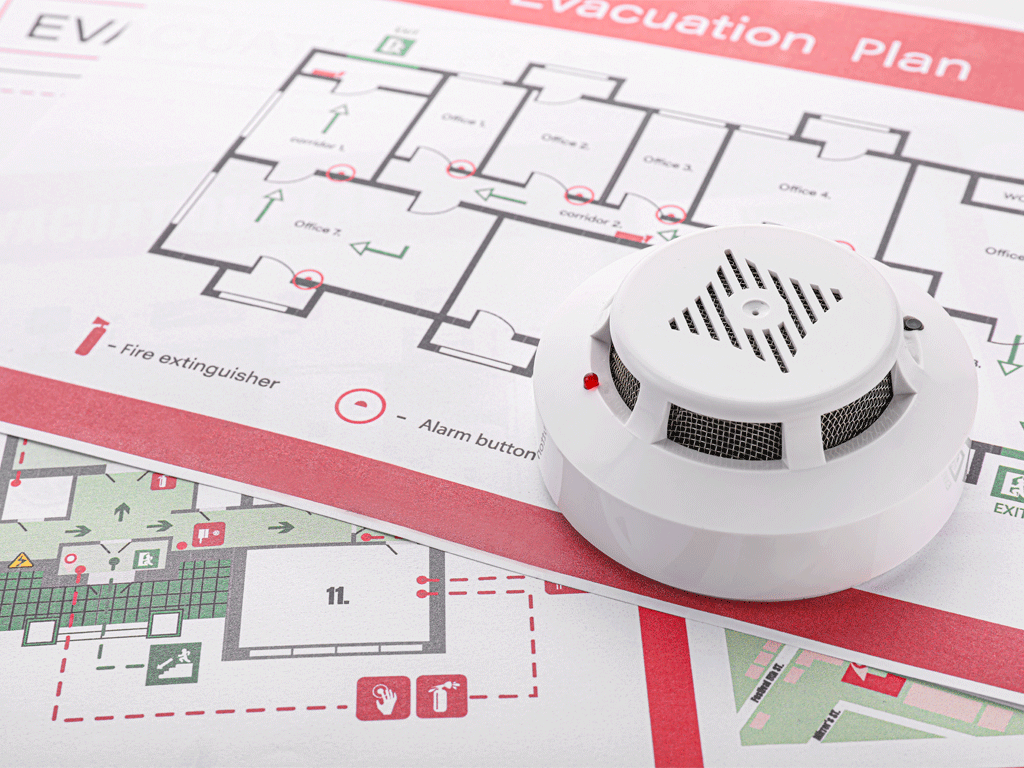Are You Monitoring Life Safety Systems? Maybe You Should! – Part II

Dr. Rodger Reiswig, SET, PMSFPE
The opportunities to monitor fire alarm systems today are something every installer and maintainer should be interested in providing. Almost all occupancy classifications, (business, educational, etc.) are required to be monitored. Even if all the building has installed is a sprinkler system, that system needs to be monitored as well.
The monitoring facility does not need to be owned or maintained by the installer of the fire alarm system. Many independent owners utilize outside or third-party supervising stations to monitor their systems. There are many ways to accomplish the pathway or communications method that is used to transmit the signals from the protected premises to the supervising station. NFPA 72® The National Fire Alarm and Signaling Code defines parameters of how the technologies need to perform in section 26.6 but does not specify the type of technology that needs to be implemented.
A misnomer is that there must be two pathways or communications methods used to transmit signals to the supervising station. NFPA 72® allows for single communications pathways to be used and allows for multiple communications pathways. There are timings for “check-in” or supervisory “heartbeat” signals that need to be transmitted, and that time is lengthened if multiple communication pathways are utilized.
NFPA 72® 2002 edition states in 26.6.3.3 Single Communications Path. Unless prohibited by the enforcing authority, governing laws, codes, or standards, where a single communications path is used, the following requirements shall be met:
(1) The path shall be supervised at an interval of not more than 60 minutes.
(2) A failure of the path shall be annunciated at the supervising station within not more than 60 minutes.
(3) The failure to complete a signal transmission shall be annunciated at the protected premises in accordance with Section 10.15.
26.6.3.4 Multiple Communications Paths.
If multiple transmission paths are used, the following requirements shall be met:
(1) Each path shall be supervised within not more than 6 hours.
(2) The failure of any path of a multipath system shall be annunciated at the supervising station within not more than 6 hours.
(3) Multiple communications paths shall be arranged so that a single point of failure shall not cause more than a single path to fail.
(4) The failure to complete a signal transmission shall be annunciated at the protected premises in accordance with Section 10.15.
Some of the common technologies that could be used, for example, are telephone lines which are referred to as a DACT, Digital Alarm Communicating Transmitters (DACTs). Others could be Internet Protocol (IP) communicators as well as cellular communicators. One that is gaining usage is MESH radio systems are gaining usage. There are some lesser used technologies available on the mark, but the four listed above are most common.
Many fire alarm systems in use today were installed with DACT technology using telephone lines. As traditional telephone lines are becoming obsolete and harder to find, the need to replace these older communicators is becoming necessary. There are modules or boxes that can create or mimic traditional telephone lines, however this article is focusing on opportunities for the installers and maintainers. These older DACTs are being replaced with IP communicators, cellular transmitters, and MESH radio systems. All have a purpose and are dependent upon the protected premises needs, availability of technologies in that given area, and the installation companies’ offerings.
When monitoring services are being offered by the installation company, there are a multitude of ways to sell that offering to a building owner. There is event monitoring where a single signal is sent to indicate a fire alarm activation, supervisory activation, trouble activation, and often a waterflow activation. Another option is per-point monitoring where every point in the system is transmitted individually to the supervising station. A third way is grouping of points to indicate that an event has occurred, for example, on a floor or a wing of a floor or area of a building. All three methods are allowable by NFPA 72® and the Building Codes.
When event monitoring is used, only a single indication is transmitted to the supervising station for each event. If a fire alarm device is activated, that one signal is transmitted to the supervising station, indicating a fire alarm has activated. If subsequent alarms are activated at the facility no further transmissions occur. The first responders are only told that a fire alarm has been activated as a given facility. Once they arrive on scene, they can then use the fire alarm system to determine where the event is located and respond accordingly. The same scenario is true for trouble indications and supervisory events. A single transmission would be sent, and when the technician arrives on site, then the exact trouble could be determined.
The next type of signal transmission, which is becoming more widely used, is per-point monitoring. Whenever any point in the system is activated or goes into trouble, that specific information is transmitted to the supervising station. The first responders would be told exactly which detector or device has gone into alarm, and the first responders could use that information while enroute to help formulate their response plan. Further, if multiple devices are activated, each device will be transmitted to the supervising station and in turn sent to the first responders. This could help first responders, allowing them to know exactly where the alarms are coming from before arriving at the premises.
The third method allows for grouping areas or floors, to send a signal representing that group of devices in lieu of each point. This is done to inform first responders where a potential fire is within a building without the need to transmit each point individually. This method is sometimes used for larger systems to help with costs for owners. Typically, an installer will charge for each point sent to the supervising station and to help owners control costs who may have very large systems. Grouping them together helps cut costs. Some installers will say they charge the same for each point, group of points, or event monitoring. However, they are leaving money on the table. Why charge the same price to a customer who has a small system or uses event monitoring the same as a 30-story hotel who could have hundreds of points? The value to the end user is there when sold correctly and installers can capture additional revenue by upselling per-point monitoring and charging for the extra information that is sent to the supervising station.




